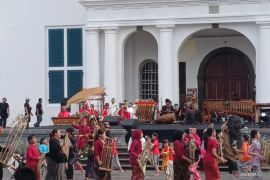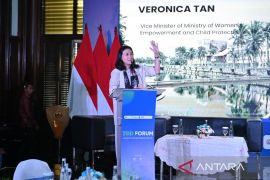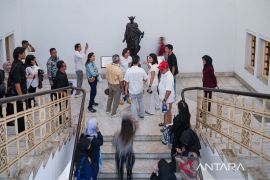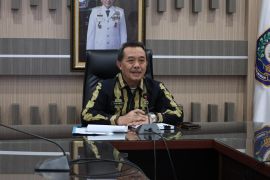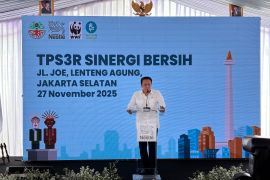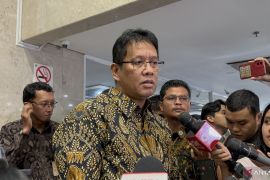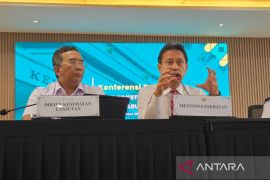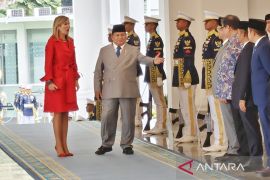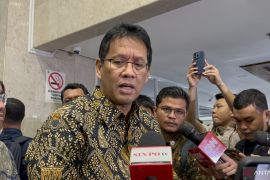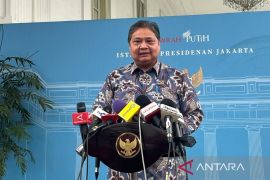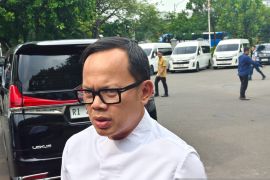There are many old buildings here. It was like I was there, stuck in the pastJakarta (ANTARA) - On Jalan Taman Fatahillah No. 1, West Jakarta, in 1620, the Dutch built a government office at the behest of Governor Jan Pieterszoon Coen. The town hall, or what was formerly called Stadhius, had undergone several renovations due to the difficult geographic contour. In 1710, the building was officially inaugurated by Governor General Abraham van Riebeeck and functioned as the administrative office of the city of Batavia.
The Dutch city hall that resembled the Dam Palace in Amsterdam also featured a square called the Stadhuisplein. In the middle of it was a fountain that was used by residents as the only source of water at that time.
This charming building, now called the Jakarta History Museum, or Fatahillah Museum, along with the fountain in the middle, had witnessed the cruelty of colonialism when a bunch of prisoners, both Dutch rebels and indigenous people of Indonesia, were tortured and executed before the eyes of the entire community.
In 2014, at the behest of Governor Joko Widodo, revitalization of Kota Tua area including Fatahillah Museum was launched. It was his initiative to restore the buildings and preserve the history lying inside and around.
Over time, the Kota Tua Area Management Unit continued working on fixing the buildings, including the Jakarta History Museum, to attract visitors. They reconstructed the buildings taking to care to keep the historical aspect in mind.
The government not only focused on restoring the magnificent ex-Dutch city hall, but they also tried to preserve the building. Hence, the historic aspect would still be present even though the building had stood for around three centuries.
As a result of the restoration, Jakarta Museum History still preserved the beauty of the resemblance of Dam Palace. The government’s attempts to woo visitors had gained positive feedback from society as well.
At present, there are always local and foreign tourists visiting every day. Some just come in to rest or hang out, while others take pictures of the historical buildings.
Kota Tua Area Management was able to attract many visitors thanks to the style of the building that looked ancient yet captivating. In addition to the Jakarta History Museum, there were also several historical buildings with equally beautiful architecture, such as the Bank Indonesia Museum, the Museum of Fine Arts and Ceramics, and the Wayang Museum.
Many visitors, from teenagers to groups of middle-aged women, clicked photos in front of these iconic buildings. Most of them were millennials and youths, hunting photos to later upload on social media. One of them was Zahra (21), a local tourist from Madiun, East Java.
"There are many old buildings here. It was like I was there, stuck in the past,” she said.
She also added that the Kota Tua area had other attractive buildings that were built a long time ago, hence she wanted to take pictures.
“These spots are aesthetically pleasing. Instagrammable,” she continued.
Another point of view came from Komariah (17), a high school student from Bekasi, West Java. Although she did not take any pictures, she still enjoyed her leisure time with friends.
“This is the second time I have visited Kota Tua. I like the atmosphere of the old buildings,” she noted.
Its popularity was not just among the millennials, some older local tourists also enjoyed the scenery. Hans (73) from Manado, North Sulawesi, admitted that he loved this place.
“I can feel the atmosphere of the old days. I think it would be nice if there are some art performances such as the wayang,” he said.
He also added that taking pictures was the second reason for visiting the Fatahillah Museum.
Related news: Exploring the past through Kota Tua Jakarta museums
“Taking pictures is reason number two, for I can show it off to people that I have been to Kota Tua back then,” he continued.
A similar opinion came from Yunita (50), a local tourist from Malang, East Java. She said that the buildings still looked ancient and beautiful.
“This is the second time I have been to Kota Tua, yet I love it,” she admitted.
Besides taking pictures of the buildings, people can also gain knowledge by visiting the Fatahillah Museum, which was the new face of the Dutch city hall.
Jakarta History Museum became a center of collection for all kinds of historical objects related to the history of Jakarta.
Around 23,500 objects were kept safe, some were original and some were replicas, but only 500 hundreds of those were displayed. For instance, there was a replica of Tugu Inscription (Prasasti Tugu) from Tarumanegara.
The museum was divided into several rooms: Jakarta Prehistoric Room, Tarumanegara Room, Jayakarta Room, Fatahillah Room, Sultan Agung Room, and M H Thamrin Room.
Related news: Kali Besar, an ocular feast in the old town of Jakarta
These display room represented each periodical. The dungeons which were once used for prisoners was also displayed.
It is such a good place to visit when people want to learn about the history of Jakarta and colonialism.
Besides, Kota Tua Tourism Area also had communities such as the community of characters. They dressed up like national heroes, such as R. A. Kartini and General Soedirman. The idea of characters such as them roaming in Kota Tua area livened up the historical atmosphere as well.
There was also a community for old bicycles named “Paguyuban Onthel”, which people could rent and go cycling for an hour. Those bikes were similar to the old ones that people in the past used to ride. It only cost around Rp20,000 (about US$1.5).
Kota Tua Area Management Unit has done a great job in preserving the buildings. Apart from educational purposes, it has also served as a tourist spot where people can enjoy the scenery and gain knowledge of the history of Jakarta and colonialism. (INE)
EDITED BY INE
Related news: Taste of heritage: culinary adventure in Jakarta's Old Town
Related news: From palmist to living statues: transgressing sightseeing at Kota Tua
Related news: Jakarta Governor Baswedan opens Urban Kampung Conference 2019
Editor: Fardah Assegaf
Copyright © ANTARA 2019

